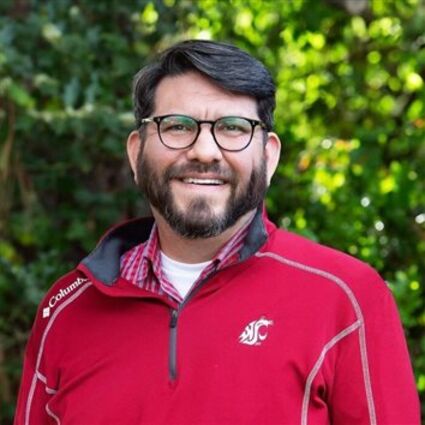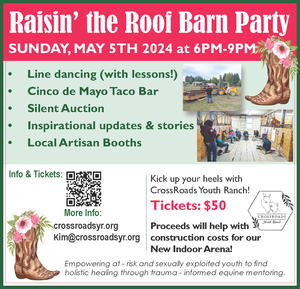La Conner alum Ryan Booth’s study travels
July 14, 2021
As a Fulbright Scholar, La Conner alum Ryan Booth visited, toured and studied on the Indian subcontinent.
Now the Washington State University Ph.D. candidate is doing the same across the United States, his summer travels including a stop at the Abraham Lincoln Presidential Library and Museum in Springfield, Illinois, a July 4 fireworks show in St. Louis and presenting a July 14 program at the Institute of American Indian Arts (IAIA) in Santa Fe, New Mexico.
“I had three major purposes for the trip,” Booth told the Weekly News this week. “One, get to Chicago to fulfill my obligations for a fellowship at the Newberry Library – COVID-19 delayed the fellowship by a year. Two, I wanted to visit the folks at Northern Cheyenne. Three, I also wanted to see the folks at White Mountain Apache. I’m on the third and final leg of that journey.”
While his long trek allowed him to elude the Pacific Northwest heat wave, Booth had his own weather experience.
“I managed to outrun a flash flood event in Roswell,” he said. “There was also large hail. I saw it on the horizon and pressed on. What a trip from there through White Sands to Las Cruces.
“It was a long drive today,” Booth added, “but I’ve seen some interesting stuff.”
Stuff he plans to share with students when classes resume fall semester.
Booth, who grew up on Swinomish Reservation, has focused much of his academic research on the Northern Cheyenne tribe, a band which had its sleeping village burned by a U.S. Army patrol less than six months after Custer’s 1876 defeat at Little Big Horn.
In his doctoral dissertation, Booth notes that “women, children and the remaining warriors observed the soldiers seize their goods, pile them up and burn every possession from the nearly 200 lodges. The crackling flames roared and bellowed in their skyward rush through the covering of hide and canvas, but before the lodgepoles could fairly ignite, the explosion of kegs and cans of powder sent all the belongings of Cheyenne domestic life rocket-like to the zenith.”
In June, Booth visited the area where the pivotal event occurred, one he said that “most people have never heard of.”
His students, of course, will be made aware.
To document the moment, Booth took a photo of the site’s red clay terrain. Booth said a lone eagle circled overhead as he lined up the shot.
From that tragic scene, Booth’s sojourn assumed a lighter tone. He left Fort Robinson, location of the Northern Cheyenne surrender, for Norfolk, Nebraska, hometown of late Tonight Show host and comedian Johnny Carson.
“I was sad that the (Carson) museum there was under renovation when I drove through,” Booth said.
Another travel highlight was a stopover in Montrose, Iowa, where the Booth side of his family settled after arriving in America from England during the 1830s. A branch of the family eventually headed west to the Willamette Valley, he said, and in Salem, Oregon today a statue of Methodist circuit rider Robert Booth stands on the state capitol grounds.
In Chicago, where Booth had attended Loyola University, he was treated to a Seattle Mariners win over the White Sox, reconnecting at Comiskey Park with his college undergrad advisor Ted Karamanski, a contributor to the Sun-Times newspaper.
"Lately, I’ve been enjoying his hospitality and that of his entire family,” Booth said of the Karamanskis. “One of those acts of hospitality included a trip to New Comiskey Park. Guaranteed Rate Field sounds awful to me, so I’ll call it by the name I knew it by 20-plus years ago.”
Booth’s primary mission in Chicago was to conduct research at the famed Newberry Library, home to one of the top collections of Native American records in the country. While there, Booth came across an early dictionary of the Chinook Trade Jargon and notes on how to make spruce beer, said to have been used by indigenous people to ward off scurvy.
At Cahokia Mounds, Illinois – centuries ago one of the largest cities in the world – Booth visited a place he has previously studied and included as a feature lecture topic.
“Twenty thousand indigenous people called it home,” he said. “It took 300 years to build the various mounds around the area, which is east of present-day St. Louis.”
As Gateway to the West, St. Louis holds special significance for Booth, whose teaching specialty is the U.S. West and Native American studies. It proved an ideal spot to celebrate Independence Day.
“It was really nice,” he said. “I’ve never seen so many fireworks in a major city.”
His hope is the trip itself will spark further interest on the part of his WSU history students.









Reader Comments(0)